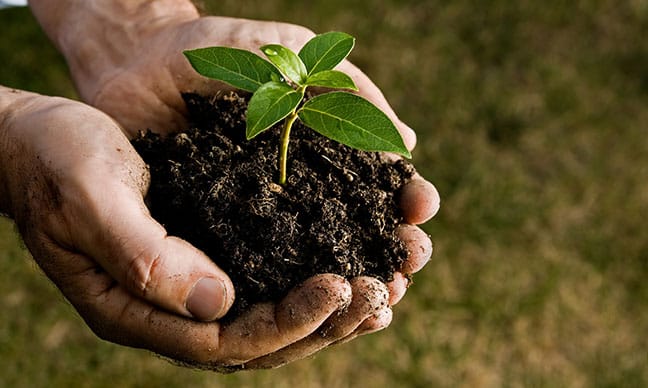Trees improve the air we breathe, hold soil in place reducing runoff into our watersheds, conserve energy, and increase the value of our homes in general. Still, to achieve all of these benefits, you first need to know how to plant a tree properly. After selecting the right spot, you will have to determine what type of tree would be the best for the location.
Planting a tree can be easy. Keep reading to find out more about planting trees and how you can do it without too much trouble!
How to Plant a Tree – Important Steps You Should Take
1. Planting Time
When you are determining the appropriate planting time, the climate will play a deciding role. Newly planted trees need time to acclimatize and root before the onset of intense dryness and heat of summer. That’s why tree services Texas recommend moderate rainfall and temperatures for new trees. Therefore, fall and spring are usually the best planting seasons. Still, since the weather is a bit different in Frisco, you can try planting in winter too.
2. Planting Spot
Planting a tree strategically around your house will lower the cost of utility bills and conserve energy. For example, a few deciduous trees on the west, east, and south sides of your house will lower cooling costs up to 50%.
Savings during winter are also important, and trees can produce this too. You can lower heating costs with staggered rows of evergreen trees on the side with prevailing winter winds. They will block harsh winds and save you some money.
In addition, planting spot is also important for aesthetic reasons. Once you choose the type of tree, determine where it would fit the best aesthetically.
3. Digging the Hole
Planting different types of trees differ when it comes to details. However, all trees eventually end up in a hole you have to dig, and it can’t be just any old hole. The first thing you have to figure out when learning how to plant a tree is to learn how to plant a proper hole. Digging a hole is the most common mistake for beginners; it usually ends up too narrow or too deep.
If the hole you dig ends up too deep, the roots won’t have enough oxygen and the growth will be significantly impacted. On the other hand, if your hole is too narrow, roots won’t be able to properly anchor the tree and to expand to nourish.
Trees shouldn’t be transplanted in a deeper soil than the soil in which they were originally grown, according to almost every tree service Frisco company. In addition, the width of the hole is determined by the diameter of the root ball – it should be at least 3 times larger. By doing this, you are providing enough worked earth for the root structure to establish itself.
It is important to avoid “glazing” if you’re digging in poorly drained clay soil. Glazing occurs when the bottom and the sides of a hole become smoothed. This forms a barrier and water can’t pass anymore. If this ever happens, use a fork to drag the points along the sides of the completed hole. Also, in order to allow water to disperse, try raising the bottom of the hole slightly higher than the surrounding area.
4. Fertilization
There are certain products you can add to the soil to help the roots establish themselves after you plant your tree. Check with your local arborist what root-promoting fertilizer would be the best for the type of soil and the type of tree you have. Keep in mind to fertilize the soil around the planting hole as well.
Related Post: Nutrition For Trees
5. Finishing Touch
There are a few more things you can do before you can say you’re done with planting a tree. Unless the tree has a large crown, there’s no need to stake the trunk. Also, make sure there are no air pockets between roots by soaking the soil well. Add about 2 to 3 inches of mulch, but try to keep it away from the trunk.
If the tree you planted has some broken or crossed branches, you can simply prune them. In addition, prune any narrow crotch angels and co-dominant leaders. Sprouts that grow out at the base of a tree can also be pruned without causing any damage to the tree.
FAQ
Q: Can I plant a tree myself?
A: Yes, planting trees in Frisco is quite an easy process and you can do it all on your own. All you need is to determine what type of tree you prefer, and then find the right spot for it. Proceed to dig a hole, planting the tree, and soaking the soil well to allow roots to establish themselves.
Q: What is the best time to plant a tree?
A: The best time to plant a tree in Frisco is late fall and winter. Since winters in Texas are not that cold, you can plant your trees during that period to allow for the roots to become established for the hot summer days. If you plant your tree in winter, it will develop enough to survive drought and sun.
Q: How big should a hole be to plant a tree?
A: A planting hole in Frisco should be at least 3 times the diameter of the root ball. If your hole is too narrow, the roots won’t be able to expand to nourish and they won’t be able to anchor the tree. In addition, make sure the hole is not too deep to allow enough oxygen to the roots.
Local Tree Experts Overview
Hopefully, this article will help you better understand how to plant a tree in Frisco. First, you need to determine what type of tree you would like to plant. Then, find the perfect spot for it and prepare your tools for digging a hole. Once you’re ready, dig a hole big enough for the tree to settle in and start expanding itself!




